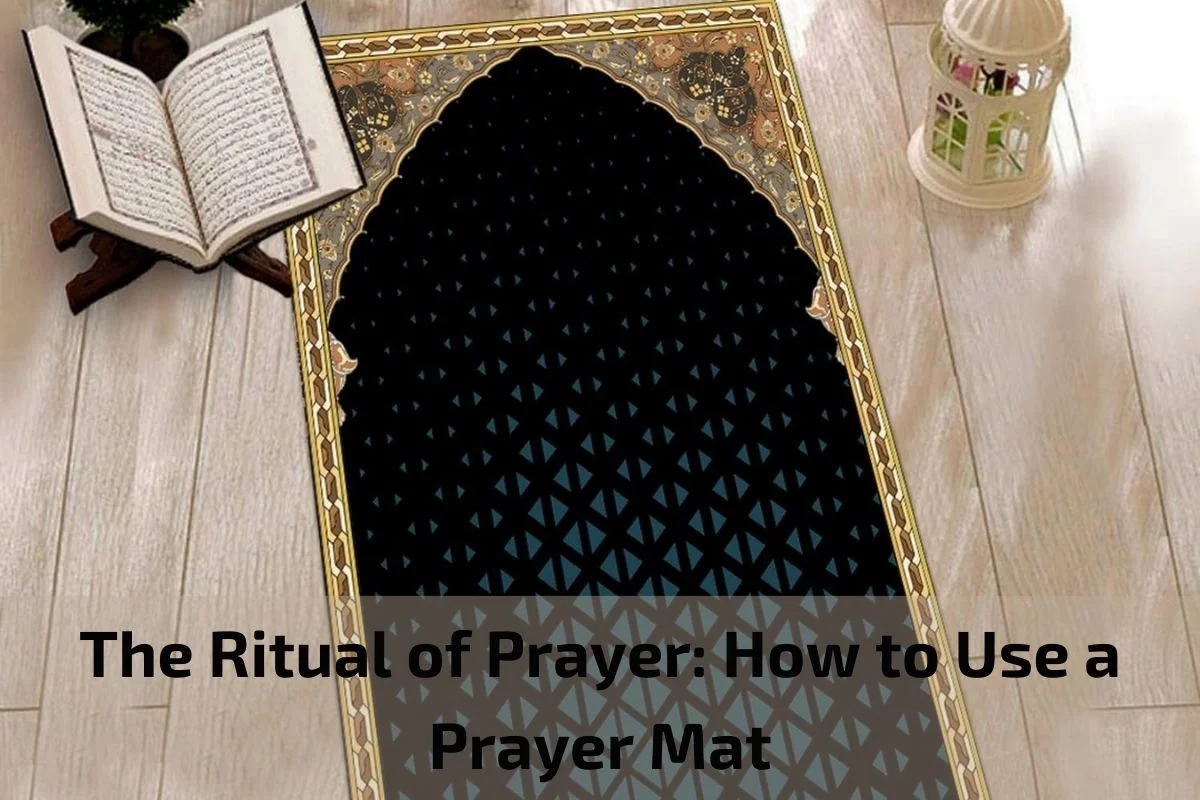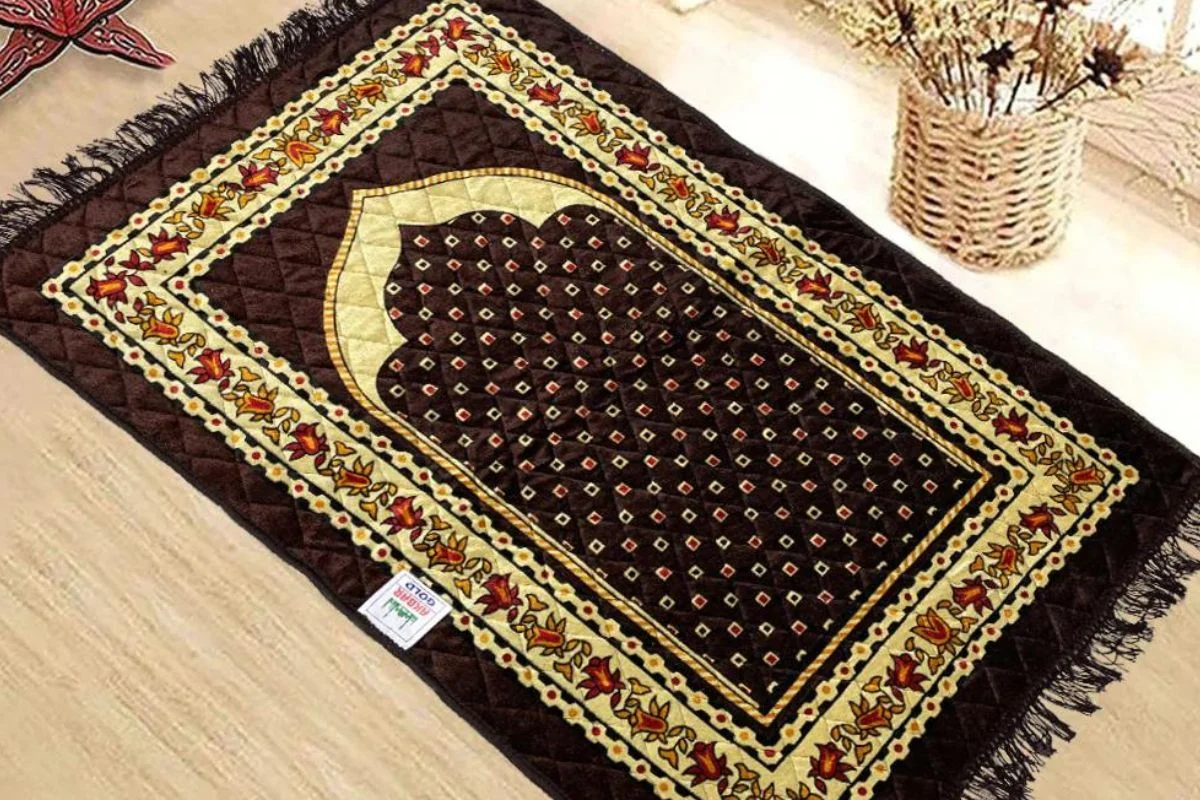
The ritual of prayer is a sacred and deeply meaningful practice in many cultures and religions around the world. At the heart of this spiritual act lies reverence, devotion, and connection to a higher power. Central to the ritual of prayer is the use of a prayer mat, a symbolic and indispensable tool that serves as a physical bridge between the worshipper and the divine.
In this guide, we delve into the essence of the ritual of prayer and explore the significance of using a prayer mat in various religious traditions. From Islam to Judaism, Christianity to Hinduism, the act of prayer holds profound significance, uniting believers in a shared expression of faith and devotion.
Join us as we embark on a journey to uncover the timeless rituals and practices associated with prayer, and discover the profound meaning behind the use of a prayer mat in facilitating this sacred connection. Whether you are a seasoned practitioner or simply curious about the spiritual significance of prayer, this exploration promises to offer insights and inspiration into the rich tapestry of human devotion and faith
Brief overview of the importance of prayer mats in various religious traditions
A brief overview of the importance of prayer mats in various religious traditions reveals their profound significance as spiritual tools facilitating the act of worship and connection to the divine. Across different faiths, prayer mats serve as sacred symbols representing reverence, devotion, and the sanctity of prayer spaces.
In Islam, prayer mats, known as “sajjadah” or “musalla,” hold special significance in daily worship rituals. Muslims use prayer mats to establish a clean and dedicated space for performing the obligatory prayers (Salah). These mats often feature a mihrab, indicating the direction of Mecca, and serve as a focal point for aligning oneself towards the Holy Kaaba during prayer. Beyond their practical utility, prayer mats symbolize humility, submission, and spiritual discipline, reminding worshippers of the importance of seeking closeness to Allah in all aspects of life.
In Judaism, prayer shawls, known as “tallit,” are used during prayer services and rituals. While not exactly mats in the traditional sense, they serve a similar purpose in providing a designated space for prayer and reflection. The tallit symbolizes the wearer’s commitment to observing Jewish commandments and serves as a tangible reminder of the covenant between God and the Jewish people. It embodies the spiritual connection to the divine and the collective identity of the Jewish community.
In Christianity, prayer mats or kneelers are commonly used in churches and cathedrals as a place for worshippers to kneel and pray. While the use of prayer mats is not as prevalent in Christianity compared to other religions, the act of kneeling on a padded surface during prayer symbolizes humility, reverence, and submission to God’s will. It provides a physical space for worshippers to express their devotion and surrender to divine guidance.
In Hinduism and Buddhism, prayer mats or meditation cushions serve as aids for practitioners during meditation and spiritual contemplation. These mats provide a comfortable and supportive surface for sitting and help create a conducive environment for inner reflection, mindfulness, and enlightenment. They symbolize the sacredness of the meditation space and the journey towards spiritual awakening and self-realization.

The Significance of the Prayer Mat in Islamic Worship
The prayer mat, known as “sajjadah” or “musalla” in Arabic, holds profound significance in Islamic worship, serving as a tangible symbol of devotion, reverence, and spiritual connection. Its importance is deeply rooted in Islamic tradition and plays a central role in the ritual of Salah (prayer).
Ritual Purification (Wudu) and Preparation of the Prayer Space:
- Before performing Salah, Muslims engage in ritual purification known as Wudu, which involves washing specific parts of the body.
- After completing Wudu, Muslims lay out the prayer mat in a clean and designated prayer area, ensuring the space is free from impurities and distractions.
- The act of spreading the prayer mat signifies the readiness to engage in communion with Allah and signals the transition from worldly concerns to spiritual devotion.
Symbolism of the Mihrab (Prayer Niche) and Qibla (Direction of Mecca) on Prayer Mats:
- Many prayer mats feature a mihrab, a small niche or arch, which indicates the direction of the Kaaba in Mecca, the holiest site in Islam.
- The mihrab serves as a visual guide for worshippers to orient themselves towards the Qibla, the direction of prayer, which is obligatory during Salah.
- By aligning themselves towards the Qibla, Muslims demonstrate their unity and submission to Allah, symbolizing the centrality of Mecca in Islamic worship.
Etiquette and Rituals Associated with Using Prayer Mats during Salah:
- Muslims place the prayer mat on a clean and level surface, ensuring it is free from wrinkles and impurities.
- Before beginning Salah, worshippers stand at the edge of the prayer mat, facing the Qibla, and recite the opening supplication (Takbir).
- Throughout Salah, the prayer mat provides a comfortable and designated space for prostration (Sujood) and bowing (Ruku’), facilitating the physical postures and movements prescribed in Islamic prayer.
Advantages And Disadvantages of Prayer Mats
Prayer mats, also known as Sajjadah or Musalla, are revered objects in many religious traditions, particularly in Islam. While they serve as essential tools for facilitating worship and spiritual connection, prayer mats also come with their own set of advantages and disadvantages.
Advantages:
- Spiritual Connection: Prayer mats provide a designated space for worshippers to engage in prayer and meditation, fostering a sense of spiritual connection and devotion to the divine.
- Cleanliness and Hygiene: By using prayer mats, worshippers can ensure that they have a clean and hygienic surface to perform their religious rituals, especially in public spaces or areas where cleanliness may be a concern.
- Focus and Concentration: The use of prayer mats helps worshippers create a dedicated and distraction-free environment for prayer, allowing them to focus their thoughts and intentions solely on their worship.
- Symbolism and Tradition: Prayer mats carry deep symbolic meaning and cultural significance, representing centuries-old traditions of faith, devotion, and spiritual practice within religious communities.
- Convenience and Portability: Prayer mats are lightweight and portable, making them convenient for worshippers to carry with them during travel or to use in various settings, whether at home, in mosques, or outdoors.
Disadvantages:
- Dependency on Material: Some prayer mats may be made from materials that are not environmentally friendly or sustainable, contributing to issues related to resource depletion and waste accumulation.
- Maintenance Requirements: Prayer mats require regular cleaning and maintenance to preserve their condition and hygiene, which can be time-consuming and may require additional effort on the part of worshippers.
- Quality and Durability: Low-quality prayer mats may wear out or become damaged over time, requiring frequent replacement and investment in new mats.
- Cultural Sensitivity: In some cultural contexts, the use of prayer mats may inadvertently perpetuate stereotypes or cultural misunderstandings, leading to tensions or conflicts within diverse communities.
- Accessibility Challenges: For individuals with physical disabilities or mobility issues, using prayer mats may present challenges in terms of accessing prayer spaces or maintaining proper posture during worship.
The Future of Prayer Mats: Innovations and Trends
As we look ahead, the evolution of prayer mats continues to be shaped by technological advancements, changing lifestyles, and shifting cultural landscapes. Innovations and emerging trends in prayer mats offer exciting possibilities for enhancing the spiritual experience and meeting the diverse needs of worshippers worldwide.
Technological Advancements:
- Smart Prayer Mats: Integration of technology into prayer mats, such as embedded sensors or smart fabrics, to provide real-time feedback on posture, alignment, and concentration during prayer.
- Digital Connectivity: Incorporation of digital features, such as smartphone apps or cloud-based platforms, to enhance the interactive and educational aspects of prayer mats, offering personalized guidance and insights for worshippers.
Modern Adaptations:
- Eco-Friendly Materials: Emphasis on sustainable and biodegradable materials in prayer mat production, reflecting a growing awareness of environmental conservation and ethical consumption practices.
- Modular Designs: Adoption of modular and customizable designs that allow worshippers to personalise their prayer mats according to their preferences, including size, colour, and patterns.
Contemporary Interpretations:
- Artistic Expression: Exploration of innovative designs and artistic interpretations of prayer mats by contemporary artists and designers, blending traditional motifs with modern aesthetics.
- Cultural Fusion: Fusion of diverse cultural influences and design elements in prayer mats, reflecting the interconnectedness of global communities and celebrating cultural diversity.
Accessibility and Inclusivity:
- Ergonomic Design: Integration of ergonomic features and ergonomic design principles in prayer mats to accommodate worshippers of all ages and physical abilities.
- Inclusive Spaces: Promotion of inclusive prayer spaces and facilities that cater to the needs of diverse worshippers, including individuals with disabilities and special needs.
Sustainable Practices:
- Ethical Sourcing: Adoption of ethical sourcing practices and fair trade principles in the production of prayer mats, ensuring transparency and accountability in the supply chain.
- Circular Economy: Embrace of circular economy principles to minimise waste and maximise resource efficiency throughout the lifecycle of prayer mats, from production to disposal.

Practical Considerations: Choosing and Caring for a Prayer Mat
Selecting and maintaining a prayer mat is a thoughtful process that involves consideration of various practical factors to ensure a meaningful and enduring worship experience. From choosing the right material and design to implementing proper care and maintenance routines, here are essential considerations for worshippers:
Factors to Consider When Choosing a Prayer Mat:
- Material: Opt for high-quality, durable materials such as cotton, wool, or synthetic fibres that offer comfort, longevity, and ease of maintenance.
- Size: Select a prayer mat size that accommodates your height and space requirements, allowing for ample room for prostration and comfortable movement during prayer.
- Design: Choose a design that resonates with your personal taste, religious traditions, and cultural heritage, whether it features traditional motifs, geometric patterns, or contemporary artwork.
- Thickness: Consider the thickness of the prayer mat to ensure adequate cushioning and support for your knees and body during prayer, especially if you will be using it on hard surfaces.
- Portability: If you plan to travel frequently or attend prayers outside of your home, opt for a lightweight and portable prayer mat that is easy to fold, carry, and store.
Care and Maintenance Tips for Prayer Mats:
- Regular Cleaning: Vacuum or shake out your prayer mat regularly to remove dust, dirt, and debris. Spot clean any stains or spills promptly using a mild detergent and water, and allow the mat to air dry thoroughly.
- Gentle Washing: If your prayer mat is machine washable, use a gentle cycle with cold water and mild detergent. Avoid using bleach or harsh chemicals that may damage the fabric or colors.
- Air Drying: Lay the prayer mat flat to dry in a well-ventilated area away from direct sunlight to prevent fading and shrinkage. Avoid using a dryer, as high heat can damage the fibers and cause deformation.
- Avoiding Moisture: Keep your prayer mat dry and moisture-free to prevent mold, mildew, and unpleasant odors. Store it in a clean, dry place when not in use, and avoid placing it on damp surfaces.
- Rotation and Alternation: Rotate and alternate the use of your prayer mats to distribute wear and tear evenly, prolonging their lifespan and maintaining their appearance and integrity over time.
- Storage: Store your prayer mat in a clean, dry storage bag or container when traveling or not in use to protect it from dust, insects, and other contaminants.
Conclusion
In conclusion, prayer mats serve as more than just functional tools for religious observance—they embody a profound connection to faith, tradition, and spirituality. Throughout history and across diverse cultures and religions, prayer mats have been revered symbols of devotion, humility, and reverence in the act of worship.
.
